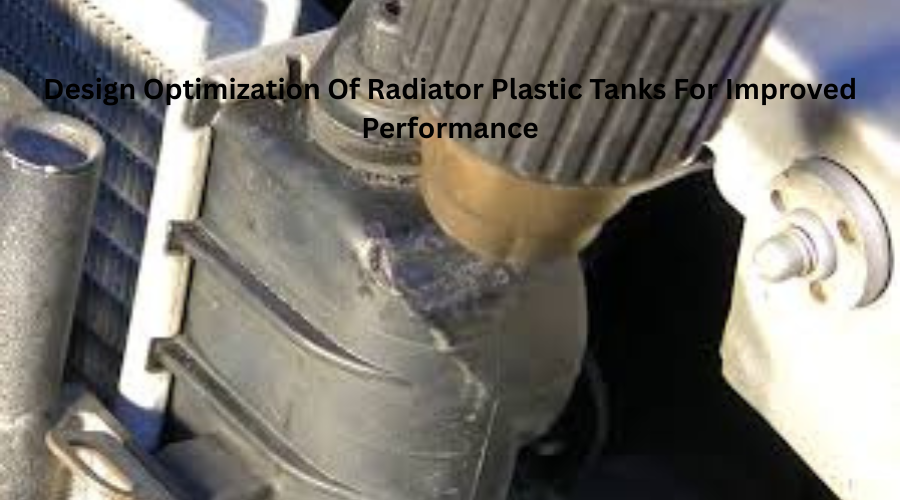How To Extend Your Radiator's Lifespan?
- linghangtechnology
- Jan 23
- 4 min read

Your vehicle's radiator plays a vital function in keeping the engine cool and avoiding it from excessive heat. However, many car owners overlook proper radiator maintenance, leading to expensive fixes, costly repairs, or even complete failure. If you want to extend your radiator's lifespan, you need to follow some essential maintenance steps. In this guide, we'll share the top five tips to keep your radiator in top shape and avoid unnecessary breakdowns. The auto radiator plastic tank is also a core component that performs a vital role in the cooling system, and maintaining it can prevent overheating issues.
1. Regularly Check and Maintain Coolant Levels
Coolant, also known as antifreeze, is vital for your radiator's performance. It absorbs heat from the engine and expels it through the radiator. Over time, coolant levels can drop due to leaks or evaporation. If the coolant level gets too low, your radiator won't function properly, leading to overheating and potential engine damage.
How to Check Coolant Levels:
Make sure your car is parked on a horizontal plane, and the engine is completely cool.
Open the hood and locate the coolant storage tank.
Check the coolant level against the "Min" and "Max" markings.
If the level is low, add the recommended coolant type for your vehicle.
Never mix various kinds of coolant, as this can cause chemical reactions that reduce efficiency.
By maintaining proper coolant levels, you can avoid overheating and lengthen the lifespan of your radiator.
2. Flush Your Radiator Periodically
Over time, dirt, rust, and debris can accumulate in your radiator, reducing its efficiency. A radiator flush removes these contaminants, ensuring smooth coolant circulation and preventing blockages that could lead to overheating.
How Often Should You Flush Your Radiator?
Most experts recommend flushing the radiator every 30,000 to 50,000 miles or as mentioned in your vehicle's owner's manual. However, if you notice rust-colored coolant, sludge buildup, or overheating issues, it might be time for an earlier flush.
Steps to Flush Your Radiator:
Allow the engine to cool completely.
Place a collection tray under the radiator and remove the drain plug.
Let the old coolant drain out completely.
Close the drain valve and replenish the radiator fluid with a radiator cleaning solution.
Run the engine for 10-15 minutes, then let it cool down.
Drain the cleaning solution, refill with fresh coolant, and replace the radiator cap.
A regular radiator flush keeps your cooling system clean and prevents internal corrosion, extending the radiator's lifespan.

3. Inspect for Leaks and Corrosion
A leaking radiator is one of the most common causes of engine overheating. Even tiny cracks can head to significant problems if left unchecked.
How to Spot Radiator Leaks:
Look under your vehicle for puddles of coolant (usually green, orange, or pink in color).
Check hoses and connections for any visible cracks or leaks.
Inspect the radiator itself for rust, corrosion, or white residue, which could indicate a slow leak.
Use a radiator pressure tester to detect hidden leaks.
If you find a leak, take care of it promptly to avoid more deterioration. Small leaks can often be fixed with a radiator sealant, but larger leaks may require professional repairs or radiator replacement.
4. Ensure Proper Airflow to the Radiator
Your radiator needs adequate airflow to dissipate heat effectively. Blocked or clogged radiators can cause inefficient cooling and overheating issues.
How to Maintain Proper Airflow:
Regularly clean the radiator fins to remove dirt, bugs, and debris.
Make sure there are no obstructions blocking the front grille.
If your vehicle has an automotive ventilation fan, check that it is functioning properly.
Inspect the radiator cap to ensure a proper seal; a faulty cap can lead to pressure loss and overheating.
By keeping your radiator free from obstructions and ensuring proper airflow, you enhance cooling efficiency and extend its lifespan.
5. Use High-Quality Coolant and Avoid Hard Water
Using the right coolant and avoiding hard water in your radiator can make a big difference in its longevity.
Why High-Quality Coolant Matters:
Cheap or low-quality coolant may lack essential additives that prevent rust and corrosion. Always choose a manufacturer-recommended coolant for your vehicle.
Avoid Using Hard Water:
Mixing coolant with hard water (which contains high mineral content) can lead to mineral accumulation inside the radiator. This buildup restricts coolant flow and reduces heat dissipation. Instead, use distilled water when diluting coolant to prevent mineral deposits.
By choosing high-quality coolant and distilled water, you reduce the risk of internal damage and improve radiator performance.
FAQs
1. How long does a car radiator typically last?
A well-maintained radiator can last 8-10 years or more, depending on driving conditions and maintenance habits.
2. What are the signs that my radiator is failing?
Common signs include engine overheating, visible coolant leaks, rust or corrosion, and low coolant levels.
3. Can I drive with a leaking radiator?
It's not recommended. Driving with a leaking radiator can lead to engine overheating and severe damage.
4. How can I tell if my radiator cap is faulty?
A faulty radiator cap may cause coolant leaks, pressure loss, or overheating. If you suspect an issue, replace it with a new one.
Conclusion
Taking care of your radiator is crucial for maintaining your vehicle's cooling system and preventing costly repairs. By checking coolant levels, flushing the radiator, inspecting for leaks, maintaining proper airflow, and using high-quality coolant, you can significantly extend your radiator's lifespan. Implement these simple yet effective maintenance tips, and your radiator will keep your engine running smoothly for years to come!






Comments